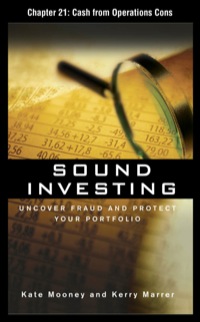















Required information The Foundational 15 [LO3-1, LO3-2, LO3-3, LO3-4) [The following information applies to the questions displayed below.] Bunnell Corporation is a manufacturer that uses job-order costing. On January 1, the company's inventory balances were as follows: Raw materials Work in process Finished goods $ 40,000 $ 18,000 $ 35,000 The company applies overhead cost to jobs on the basis of direct labor-hours. For the current year, the company's predetermined overhead rate of $16.25 per direct labor-hour was based on a cost formula that estimated $650,000 of total manufacturing overhead for an estimated activity level of 40,000 direct labor-hours. The following transactions were recorded for the year: a. Raw materials were purchased on account, $510,000. b. Raw materials used in production, $480,000. All of of the raw materials were used as direct materials. c. The following costs were accrued for employee services: direct labor, $600,000; indirect labor, $150,000; selling and administrative salaries, $240,000. d. Incurred various selling and administrative expenses (e.g., advertising, sales travel costs, and finished goods warehousing), $367,000. e. Incurred various manufacturing overhead costs (e.g., depreciation, insurance, and utilities), $500,000. f. Manufacturing overhead cost was applied to production. The company actually worked 41,000 direct labor-hours on all jobs during the year. g. Jobs costing $1,680,000 to manufacture according to their job cost sheets were completed during the year. h. Jobs were sold on account to customers during the year for a total of $2,800,000. The jobs cost $1,690,000 to manufacture according to their job cost sheets. Foundational 3-1 Required: 1. What is the journal entry to record raw materials used in production? (If no entry is required for a transaction/event, select "No journal entry required" in the first account field.) View transaction list Journal entry worksheet Record the raw materials used in production. Note: Enter debits before credits. Transaction General Journal Debit Credit 1 Record entry Clear entry View general journal Foundational 3-2 2. What is the ending balance in Raw Materials? Raw Materials Beg. Bal. End. Bal. 0 0 3. What is the journal entry to record the labor costs incurred during the year? (If no entry is required for a transaction/event, select "No journal entry required" in the first account field.) View transaction list Journal entry worksheet Record the accrued labor costs. Note: Enter debits before credits. Transaction General Journal Debit Credit Record entry Clear entry View general journal Foundational 3-4 4. What is the total amount of manufacturing overhead applied to production during the year? Manufacturing overhead applied Foundational 3-5 5. What is the total manufacturing cost added to Work in Process during the year? Total manufacturing cost 6. What is the journal entry to record the transfer of completed jobs that is referred to in item g above? (If no entry is required for a transaction/event, select "No journal entry required" in the first account field.) View transaction list Journal entry worksheet Record the manufactured goods completed during this year. Note: Enter debits before credits. Transaction General Journal Debit Credit 1 Record entry Clear entry View general journal 7. What is the ending balance in Work in Process? Work in Process Beg. Bal. End. Bal. Foundational 3-8 8. What is the total amount of actual manufacturing overhead cost incurred during the year? Total actual manufacturing overhead cost Foundational 3-9 9. Is manufacturing overhead underapplied or overapplied for the year? By how much? Foundational 3-10 10. What is the cost of goods available for sale during the year? Cost of goods available for sale 11. What is the journal entry to record the cost of goods sold referred to in item h above? (If no entry is required for a transaction/event, select "No journal entry required" in the first account field.) View transaction list Journal entry worksheet 1 > Record the cost of goods sold to the customer. Note: Enter debits before credits. General Journal Debit Credit Transaction 1 Record entry Clear entry View general journal Foundational 3-12 2. What is the ending balance in Finished Goods? Finished Goods Beg. Bal. End. Bal. 13. Assuming that the company closes its underapplied or overapplied overhead to Cost of Goods Sold, what is the adjusted cost of goods sold for the year? Adjusted cost of goods sold 14. What is the gross margin for the year? Gross margin 15. What is the net operating income for the year? Net operating income






















